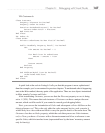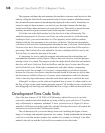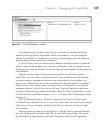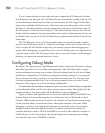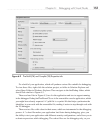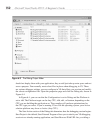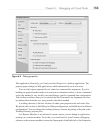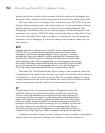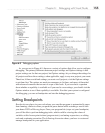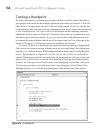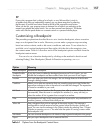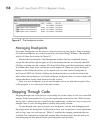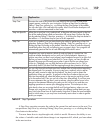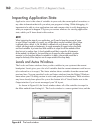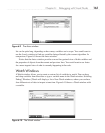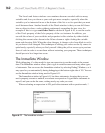
Chapter 6: Debugging with Visual Studio 155
As you can see in Figure 6-5, there are a variety of options that allow you to configure
debugging. The primary difference between project settings and Options settings is that
project settings are for that one project, but Options settings let you change the settings for
all projects and have those settings, when applicable, apply to any new projects you create.
Therefore, if there are default settings you want on all projects, visit the Options settings
to set them first. The options are much too numerous to list here, and many of them deal
with advanced scenarios that are out of scope of this book. If you ever have a question
about whether a capability is available or if you need to save settings, you should visit the
Options window to see if that capability is available. Now that your system is configured
for debugging, you can set breakpoints and start the debugging process.
Setting Breakpoints
Breakpoints are places in your code where you want the program to automatically pause
from running, similar to when you push the pause button while watching a movie with
your home DVD or Blu-ray player. Once your program hits (stops on) your breakpoint,
you will be able to perform debugging tasks, which could be viewing the values of
variables at this frozen point in time (program state), evaluating expressions, or editing
code and continuing execution. The following discussion shows you how to create and
manage breakpoints in your application.
Figure 6-5 Debugging options



